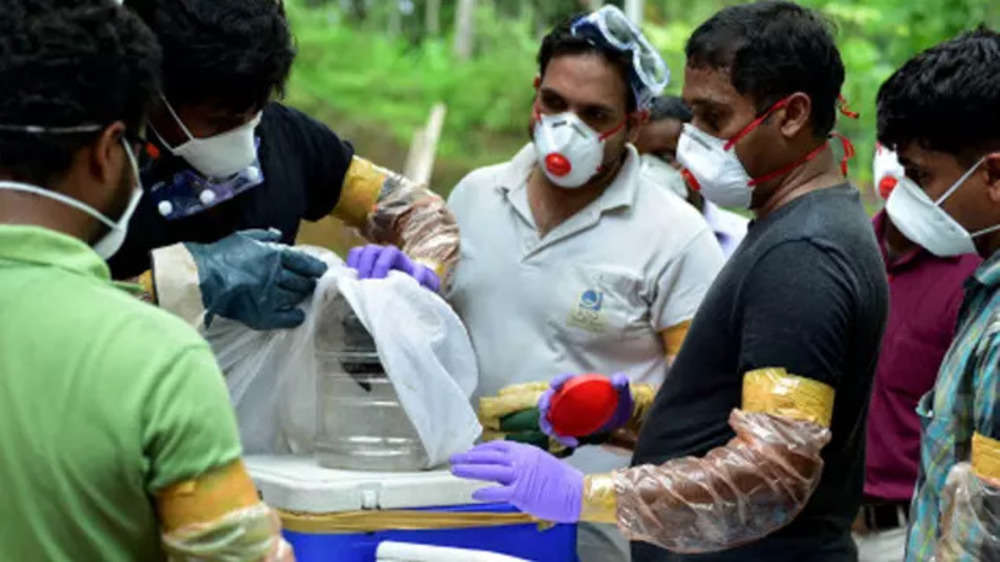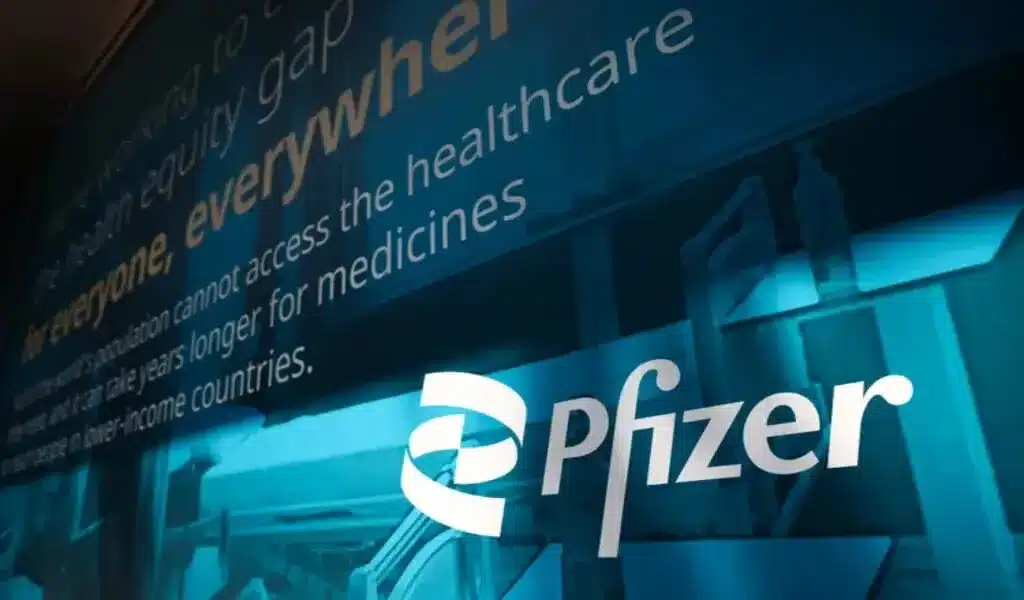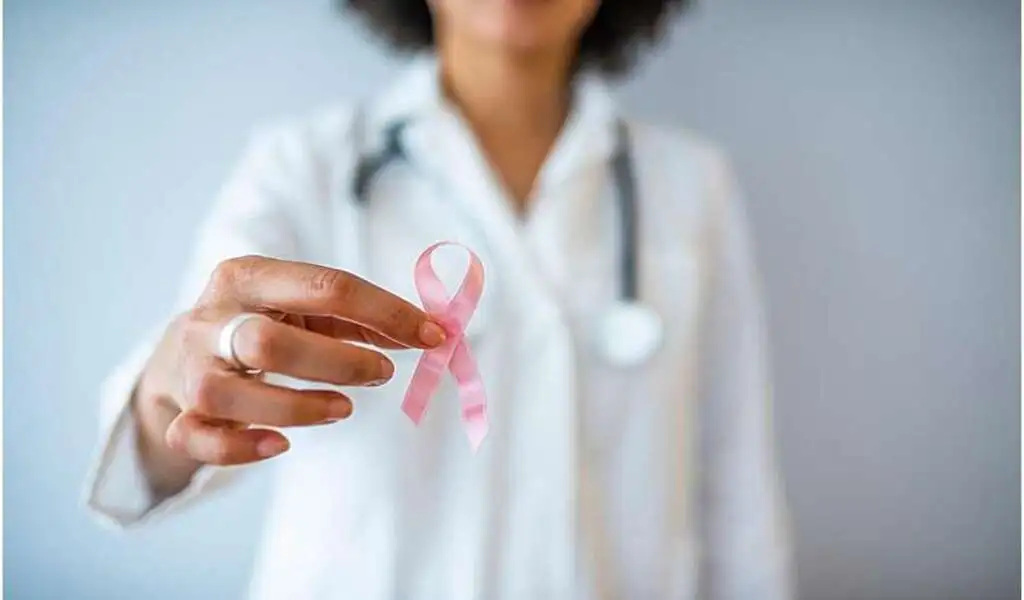Health
India Shutters Schools, Offices and Public Transport Over Nipah Virus
Kerala, a state in southern India, closed some schools, offices and public transport on Wednesday to prevent the spread of the rare and deadly Nipah virus, which has already killed two individuals.
A state health official reported that two adults and a child were still infected and that more than 700 people were being tested for the virus, which is transmitted through contact with the bodily secretions of infected bats, pigs, or humans.
According to Reuters, the state government announced that at least 706 individuals, including 153 health care employees, were undergoing testing to prevent the spread of the virus. We awaited the outcome.
Pinarayi Vijayan, the chief minister of Kerala, said in a statement, “More people could be tested…Isolation facilities will be provided.” He requested that no public gatherings take place in the Kozhikode district for the next ten days.
Since August 30, two infected individuals have died in the fourth outbreak of the virus in Kerala since the beginning of 2018, prompting authorities to declare containment zones in at least eight Kozhikode villages.

“We are focusing on early contact tracing and isolating anyone exhibiting symptoms,” state Health Minister Veena George told reporters.
She stated that the virus detected in Kerala was identical to one previously discovered in Bangladesh, a strain that transmits from person to person with a high mortality rate but a history of being less infectious.
She added that state epidemiologists were using antivirals and monoclonal antibodies to treat three infected individuals, including a healthcare worker.
Strict isolation rules have been adopted, with medical personnel being quarantined after contact with the infected.
The first victim was a small landowner in the Kozhikode village of Maruthonkara who grew bananas and areca nuts, according to a government official who retraced the victim’s movements to identify the people he interacted with and the locations he visited before his health began to deteriorate.
The daughter and brother-in-law of the victim, both afflicted, are in an isolation ward while other family members and neighbours undergo testing.
The second fatality occurred after hospital contact with the first victim, according to an initial investigation, but the two were unrelated, said the official, who requested anonymity because he was not authorised to speak with the media.

The Nipah virus was first identified in 1999 during an outbreak of illness among Malaysian and Singaporean pig farmers and others in direct contact with the animals.
Outbreaks are sporadic and previous infections in South Asia have occurred when humans drank date-palm sap contaminated with bat excreta.
The native village of the first victim, Maruthonkara, is located close to a 300-acre forest that is home to numerous bat species. Fruit bats from the same region tested positive for the virus during the 2018 Nipah outbreak.
In Kerala’s initial Nipah outbreak, 21 of the 23 infected individuals perished. Two individuals perished due to epidemics in 2019 and 2021.
The neighbouring state of Tamil Nadu has proclaimed that travellers from Kerala will be subjected to medical examinations and those exhibiting influenza symptoms will be quarantined.
As a result of extensive deforestation and urbanisation, which have brought humans and wildlife into closer contact, parts of Kerala were identified in a May investigation as being among the places worldwide most susceptible to outbreaks of bat viruses.

About the Nipah virus
Nipah virus (NiV) is a zoonotic virus that can cause severe and often fatal infections in humans and animals. It was first identified in 1999 during an outbreak in Malaysia and Singapore. The virus is named after the village of Sungai Nipah in Malaysia, where the outbreak occurred.
Key facts about the Nipah virus:
- Transmission: Nipah virus is primarily transmitted to humans from animals (zoonotic) or through human-to-human transmission. Fruit bats of the Pteropodidae family are considered the natural reservoir hosts of the Nipah virus, and they can be transmitted to humans through direct contact with infected bats or their secretions. Human-to-human transmission occurs through close contact with the bodily fluids of infected individuals.
- Symptoms: Nipah virus infection can lead to various symptoms, including fever, headache, dizziness, drowsiness, mental confusion, and respiratory issues. Severe cases can progress to encephalitis (brain inflammation), leading to coma and death. Some individuals infected with the Nipah virus may also experience acute respiratory distress syndrome (ARDS).
- Outbreaks: Nipah virus outbreaks have occurred in several countries in Southeast Asia and South Asia. Bangladesh and India have experienced multiple outbreaks, with the virus primarily spreading from fruit bats to humans through the consumption of contaminated fruits or contact with infected pigs.
- Prevention: There is no specific antiviral treatment for Nipah virus infection, and management typically involves supportive care. Preventative measures include avoiding contact with sick animals and bats and practicing good hygiene and safe food preparation techniques. Isolation and quarantine measures are also crucial to prevent human-to-human transmission during outbreaks.
- Vaccine: As of my last knowledge update in September 2021, no licensed vaccine was available for the Nipah virus. However, research was ongoing to develop vaccines and antiviral drugs for this virus due to its potential for causing large outbreaks.
Since September 2021, and there may have been developments in Nipah virus research and outbreaks since then. It’s advisable to consult the latest information from health authorities and organizations like the World Health Organization (WHO) for the most up-to-date information on the Nipah virus.

Health
Report Causes Pfizer Stock to Climb Approximately $1 Billion Acquired by Starboard

(VOR News) – According to a rumor that activist investor Pfizer Starboard Value has taken a holding in the struggling pharmaceutical business that is expected to be worth around one billion dollars, the stock of Pfizer (PFE) is on the increase in premarket trading on Monday.
This comes after the report was made public. The report was made available to the general public following this. Starboard Value was successful in moving forward with the acquisition of the position.
Starboard is said to have approached Ian Read, a former chief executive officer of Pfizer, and Frank D’Amelio, a former chief financial officer, in order to seek assistance with its goals of boosting the performance of the company, according to the Wall Street Journal. Read and D’Amelio are both former Pfizer executives.
The purpose of this is to facilitate the accomplishment of its objectives, which include enhancing the overall performance of the firm.
In their previous jobs, D’Amelio and Read were chief financial officers.
It is stated in the report that the hedge fund is of the opinion that Pfizer, which is currently being managed by Albert Bourla, who succeeded Read as Chief Executive Officer (CEO) in 2019, does not demonstrate the same level of mergers and acquisitions (M&A) discipline that Read did. Bourla took over for Read in 2019. Read was succeeded by Bourla in the year 2019.
Pfizer, a multinational pharmaceutical conglomerate, has made substantial investments in the acquisition of more companies that are involved in the research and development of cancer medicines.
These businesses have been acquired for billions of dollars. The biotechnology company Seagen, which was acquired by Pfizer in the previous year for a price of $43 billion, is included in this category. One of the businesses that can be classified as belonging to this category is Seagen.
In spite of the fact that the S&P 500 Index experienced a 21% increase in 2024.
No major trading occurred in Pfizer stock that year.
Due to the fact that the demand for Pfizer’s COVID-19 vaccines fell after the firm reached its pandemic peak in 2021, the share price of the corporation has decreased by over fifty percent since that time.
This drop has occurred ever since the company’s shares reached their maximum peak, which was during the time that this decline occurred. Not only have they not changed at all, but they have also remained essentially stable. This is in contrast to the S&P 500, which has gained 21% since the beginning of this year.
Recently, the corporation was forced to take a hit when it decided to recall all of the sickle cell illness medications that it had distributed all over the world.
Fears that the prescription could lead patients to experience severe agony and possibly even death were the impetus for the decision to recall the product. In spite of the fact that Pfizer’s stock is increasing by almost three percent as a result of the news that followed the company’s decision, this is the circumstance that has come about.
SOURCE: IPN
SEE ALSO:
New Study Reveals Drinking Soda Pop Increases the Risk of Stroke
The Mpox Vaccine’s Protection Decreases Within a Year; Booster Requirements
Health
New Study Reveals Drinking Soda Pop Increases the Risk of Stroke

A recent report from global research indicates that excessive consumption of coffee or soda pop is associated with an increased risk of stroke, although the intake of black and green tea is correlated with a reduced risk. Excessive consumption of soda pop or coffee warrants caution!
Recent research indicates that it may substantially elevate the risk of stroke.
Consuming four cups of coffee daily elevates the risk of stroke, according to studies, although ingesting 3-4 cups of black or green tea daily typically offers protection against stroke. Additionally, consume more coffee; it may reduce your risk of mortality.
Recent findings from global research studies co-led by the University of Galway and McMaster University, alongside an international consortium of stroke researchers, indicate that soda, encompassing both sugar-sweetened and artificially sweetened variants such as diet or zero sugar, is associated with a 22 percent heightened risk of stroke. The risk escalated significantly with the consumption of two or more of these beverages daily.
Stroke Risk Fizzy Drinks and Soda Pop
The correlation between fizzy drinks consumption and stroke risk was most pronounced in Europe, the Middle East, Africa, and South America. Women exhibit the most elevated risk of stroke from bleeding (intracranial hemorrhage) associated with fruit juice beverages. Consuming over 7 cups of water daily diminishes the likelihood of stroke due to a clot.
Researchers observed that numerous items advertised as fruit juice are derived from concentrates and have added sugars and preservatives, potentially negating the advantages often associated with fresh fruit and instead elevating stroke risk.
Fruit juice beverages were associated with a 37 percent heightened risk of stroke resulting from bleeding (intracranial hemorrhage). Consuming two of these beverages daily increases the risk thrice.
Consuming over four cups of coffee daily elevates the risk of stroke by 37 percent, although lower consumption levels do not correlate with stroke risk. Conversely, tea consumption was associated with an 18-20 percent reduction in stroke risk. Additionally, consuming 3-4 cups daily of black tea, such as Breakfast and Earl Grey varieties, excluding green and herbal teas, was associated with a 29 percent reduced risk of stroke.
Consuming 3-4 cups of green tea daily was associated with a 27 percent reduction in stroke risk. Notably, the addition of milk may diminish or inhibit the advantageous effects of antioxidants present in tea. The lower risk of stroke associated with tea consumption was negated for individuals who added milk.
Disclaimer: This article is intended solely for informational reasons and should not be considered a replacement for professional medical counsel. Consistently consult your physician regarding any inquiries pertaining to a medical problem.
Related News:
Starbucks Faces Sales Decline Amid Price Fatigue and Rising Competition
Starbucks Faces Sales Decline Amid Price Fatigue and Rising Competition
Health
Following a Diagnosis of Breast Cancer, What Else Should You Know?

(VOR News) – Even though breast cancer affects one in eight American women, receiving a diagnosis can make a woman feel isolated.
Experts in breast cancer from the American College of Physicians (ACS) advise patients on how to manage their disease so that they may better cope with this awful information.
First, the kind and stage of breast cancer dictates the course of your care.
In addition to immunotherapy and chemotherapy, there are various surgical options available for the treatment of breast cancer.
Women of African descent are disproportionately affected by triple-negative breast cancer, an extremely aggressive form of the disease that has never proven easy to treat.
According to the American Cancer Society, pembrolizumab (Keytruda), an immunotherapy, has been shown to be helpful when combined with chemotherapy and is currently the recommended course of treatment for certain combinations of triple-negative breast cancer.
In her presentation, Dr. Katharine Yao said, “It’s really important that the patient and physician discuss the patient’s preferences and values when deciding what type of treatment to pursue and that they have an honest, individualized discussion with their care team.”
She is currently responsible for developing breast cancer treatment recommendations for more than 575 hospitals and institutions nationwide in her role as chair of the American College of Surgeons’ National Accreditation Program for Breast Institutions (NAPBC).
Yao, vice chair of research at Endeavor Health NorthShore Hospitals in New York, pointed out that each decision made about a patient’s treatment plan should take her preferences and diagnosis into consideration.
She ought to think about whether she would prefer a mastectomy—a surgical procedure that involves removing the entire breast with or without reconstruction—or a lumpectomy, which involves a surgical procedure that spares part of the breast tissue.
She stated that “the breast cancer you have may be very different from the breast cancer you hear about in your neighbor, colleague, or friend” in a press release issued by the American Cancer Society (ACS).
“Consider that while discussing breast cancer with others.”
Throughout your journey, it is critical that you look after your emotional health because having breast cancer may have a detrimental impact on your mental health.
“Getting a cancer diagnosis does not mean that everything in your life stops to be normal.” Director of the Fellowship in the Diseases of the Breast program at the Winthrop P. Rockefeller Cancer Institute at the University of Arkansas and state head of the American Cancer Society Commission on Cancer for Arkansas, Dr. Daniela Ochoa She thinks adding the burden of a cancer diagnosis and treatment to all the other pressures in life may be taxing.
“Managing stress and emotional health is vital component of a treatment plan.”
Ochoa recommends clinically trained psychologists and social workers who have assisted people in coping with cancer to anyone receiving treatment. Learning coping techniques might also be facilitated by joining cancer support groups or cancer wellness initiatives.
Breast cancer specialists say your care team is crucial.
The American Cancer Society (ACS) defines comprehensive care as having support at every stage of the procedure from surgeons, oncologists, patient navigators, nurses, social workers, psychologists, and other specialists.
After receiving a breast cancer diagnosis, women should see a surgeon or medical oncologist to explore their options; nevertheless, treatment shouldn’t be discontinued after just one appointment or after surgery is over.
Additionally, you can ask trustworthy friends or family members to accompany you to appointments and aid you with research or notes. They could serve as a network of support for you.
Yao stated in his talk that “one of the most important things is that patients should search out a team they have confidence in, that they trust will have their back when they need it, and a team they feel they can get access to and that will help them when they are in need.”
SOURCE: MP
SEE ALSO:
The Mpox Vaccine’s Protection Decreases Within a Year; Booster Requirements
COVID was a Paradigm Shift in Health Policymaking, Says Commissioner Stella Kyriakides.
Rwanda Reports 8 Deaths Linked To Ebola-Like Marburg Virus Days After It Declared An Outbreak
-

 News3 years ago
News3 years agoLet’s Know About Ultra High Net Worth Individual
-
Entertainment2 years ago
Mabelle Prior: The Voice of Hope, Resilience, and Diversity Inspiring Generations
-

 Health3 years ago
Health3 years agoHow Much Ivermectin Should You Take?
-

 Tech2 years ago
Tech2 years agoTop Forex Brokers of 2023: Reviews and Analysis for Successful Trading
-

 Lifestyles3 years ago
Lifestyles3 years agoAries Soulmate Signs
-

 Movies2 years ago
Movies2 years agoWhat Should I Do If Disney Plus Keeps Logging Me Out of TV?
-

 Health3 years ago
Health3 years agoCan I Buy Ivermectin Without A Prescription in the USA?
-

 Learning3 years ago
Learning3 years agoVirtual Numbers: What Are They For?